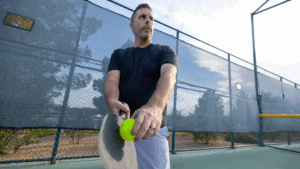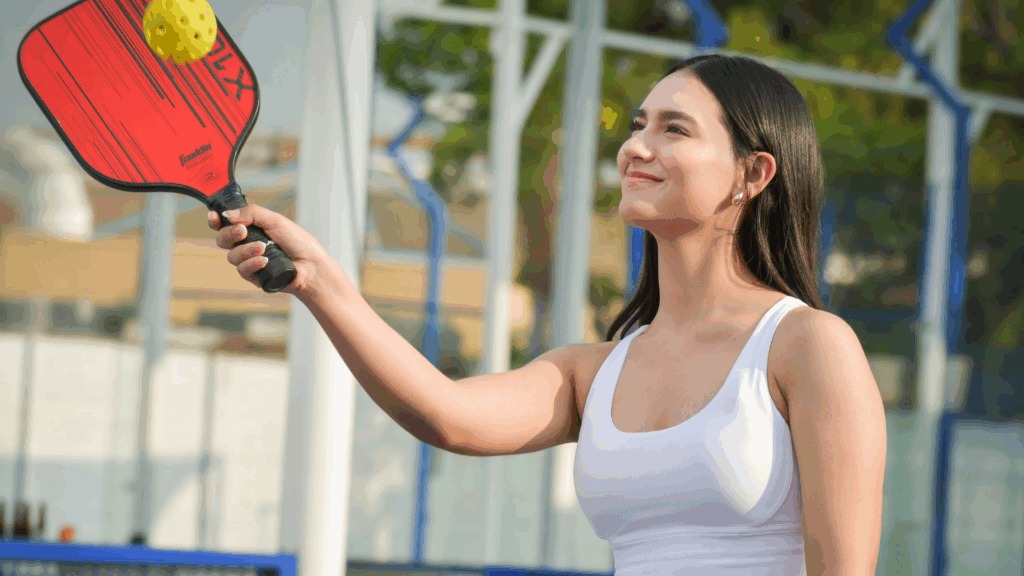
Pickleball is no longer a niche pastime tucked away on a few quiet park courts. With roughly 19.8 million Americans swinging paddles and new faces flocking in every week, the sport has become a national sensation that blends fierce competition with a community-first vibe.
Whether you are a beginner figuring out the double-bounce rule, a club regular eyeing your first tournament, or a gear-obsessed dinker debating the merits of carbon paddles, one truth unites us all: understanding the rules and etiquette of pickleball makes every rally more fun, fair, and fast-moving.
The 2025 USA Pickleball rulebook crystallizes that mission. It clarifies tricky gray areas (hello, kitchen momentum), tightens loopholes around foot placement on serves, and even offers an optional rally scoring format for players who crave brisker games.
At the same time, the updated sportsmanship guidelines reinforce why pickleball’s culture remains its secret weapon. Calling your own faults, giving opponents the benefit of doubt on line calls, and showing genuine respect—these habits turn strangers into doubles partners and elevate local courts into thriving micro-communities.
This guide solves that knowledge gap. Each of the following sections delivers digestible, on-court wisdom: the latest official rule changes, common rule misunderstandings, line-calling etiquette, court conduct fundamentals, participation trends, and how recreational enforcement differs from the pro scene.
Grab your paddle, lace up your court shoes, and let’s dive into the 2025 playbook that keeps our favorite sport rallying forward.
Official Rule Changes
Pickleball’s fresh 2025 rulebook sharpens the game with clearer language, tighter loophole control, and a renewed emphasis on sportsmanship. Knowing these updates keeps rallies rolling smoothly and spares you from mid-match head-scratching.
Rally Scoring (Provisional Option)
What Changed: Doubles may now choose rally scoring, awarding a point on every rally while still requiring the final, winning point to be scored on serve. Only one partner serves per side-out, so the score is announced with two numbers instead of three.
Why It Matters: Matches finish faster, court rotations run on schedule, and tournament directors can predict draw times with greater accuracy.
Community Buzz: Speed-lovers cheer the pace increase, while traditionalists pledge loyalty to side-out scoring. USA Pickleball will collect feedback all season before deciding whether to adopt, revise, or retire the option in 2026.
Post-Match Conduct Penalties
What Changed: Any verbal warning, technical warning, or technical foul issued after match point now carries into the first rally of a player’s next match.
Why It Matters: Sportsmanship officially extends beyond the handshake. A post-game outburst could cost you the opening point of your very next contest.
Player Takeaway: Channel cool-down routines—deep breaths, paddle tap, quick water break—before leaving the court. Angry tosses or profanity now have real scoreboard consequences.
Non-Volley Zone Clarification
What Changed: A volley officially begins at the moment the paddle contacts the ball, not during the backswing. Brushing the kitchen beforehand is legal; touching it at contact remains a fault. Momentum that drags you into the kitchen after a volley is still illegal.
Why It Matters: Removes “gotcha” arguments over harmless pre-contact grazes and aligns rule wording with real-world play.
Quick Check: If any part of your body or equipment touches the kitchen line while striking a volley, call the fault on yourself immediately.
Net-Crossing And Partner Interference
What Changed: Only the player who struck the ball may legally follow through across the net plane; partners must remain on their side. A partner positioned in the kitchen cannot physically brace the striker during a volley.
Why It Matters: Ends confusion about shared continuation privileges and prevents tandem lunges that could damage nets—or opponents.
Single Rule Of Thumb: If you did not hit the shot, keep your paddle, limbs, and momentum on your side of the net.
Call Your Partner’s Faults
What Changed: Players are now expected to call obvious faults on themselves and on their partners. If partners disagree, the point automatically goes to the opponents.
Why It Matters: Strengthens the honor system that underpins recreational play and speeds dispute resolution.
Action Step: Hear your partner’s toe hit the kitchen during a volley? Announce “Fault” before opponents need to ask.
Serve Foot Placement Tightened
What Changed: Both feet must stay behind the baseline and inside the imaginary extensions of the sideline and centerline at contact—no wide straddling for extreme angles.
Why It Matters: Eliminates creative but unfair serving positions that gained popularity in late 2024.
Self-Audit: Plant your lead foot, glance down, and confirm you are neither on the line nor outside the court’s width before swinging.
Paddle Drop Serve Clarified
What Changed: Releasing the ball off the paddle face without spin is expressly legal. Dropping, not tossing, remains the standard for a valid drop serve.
Why It Matters: Confirms a favorite consistency hack for servers and quells debates about minor paddle-roll rotation.
Remember: Gravity does the work—no flicks, flips, or finger-induced spin.
Other Notables
Paddle autograph markings are permitted if they do not alter performance.
Round-robin tiebreakers revert to total point differential among tied teams, mirroring the 2023 method.
A concise “Not ready!” verbal cue now allows receivers to stop play safely before the server begins the swing.
With these changes locked in, you can enter any court in 2025 confident that your serve stance, kitchen awareness, and post-game composure align perfectly with the latest rulebook. Up next: the everyday misunderstandings still tripping players coast to coast.
Common Rule Misunderstandings
Pickleball’s rulebook is short, yet a handful of clauses still trip up even seasoned rec players. Clear these up and you will shave minutes off debates while boosting everyone’s confidence.
Non-Volley Zone Myths
Myth: You Can Never Enter The Kitchen: Players may step into the non-volley zone whenever they wish except while volleying.
Myth: A Graze Is Harmless: If any part of your body or equipment touches the kitchen line at the instant of contact on a volley, it is a fault.
Momentum Reminder: Striking a legal volley outside the kitchen, then stumbling forward so your paddle or shoe lands in the zone, still counts as a fault.
Practical Tip: When a dink floats high, resist leaning across the line. Instead, plant both feet behind the kitchen, set your paddle early, and finish with balanced weight so momentum stays outside the zone.
Foot Faults On Serve
Definition: Both feet must be behind the baseline and inside the imaginary extensions of the sideline and centerline when the paddle strikes the ball.
Common Slip-Up: Servers often step on the baseline during their forward motion or start with a toe outside the sideline extension. Either error is a fault.
Self-Policing Etiquette: Call your own foot fault or your partner’s the moment you spot it. Doing so builds trust and prevents opponents from feeling they must “ref” every serve.
Fix: Place a piece of court tape just behind the baseline during practice. Serve twenty balls without crossing it; the visual cue trains proper footwork.
Drop Serve Dos And Don’ts
Legal Release: The ball may be dropped from your hand or allowed to roll off the paddle face, but you must not impart spin or force. Gravity alone sets the ball in motion.
Illegal Move: Tossing the ball upward, flicking it down, or twisting fingers to spin the ball makes the serve invalid.
Confusion Source: Some players watch professional events that ban drop serves or require palm-down releases, then assume those restrictions apply everywhere. In standard recreational games, the USA Pickleball drop-serve rule stands.
Pro Tip: If you enjoy consistent contact, practice drop serves until the bounce height feels natural. Many beginners find accuracy improves when the toss variable is removed.
Double-Bounce Rule Details
Rule Text: After the serve, the return must bounce once on the serving side before either team may volley. That is two mandatory bounces—one on each side—before net-crashing begins.
Typical Error: New players instinctively sprint forward and volley the third shot, forgetting the second bounce.
Coach’s Cue: Verbally count “one… two” during drills: one bounce on the serve receive, two on the third shot. The rhythm locks the timing into muscle memory.
Game Etiquette: If the receiving team volleys too early and fails to call it, servers should still point out the fault—politely. The rule protects fair rallies, not just the serving side.
When In Doubt, Ask Or Replay
Default Principle: Uncertain about a rule? Pause play, clarify with partners and opponents, then resume.
Benefit To All: Quick clarifications keep tension low and learning high. Nobody minds replaying a point if it prevents lingering confusion.
By mastering these common pitfalls—kitchen boundaries, serving feet, drop-serve releases, and bounce sequencing—you will eliminate 90 percent of recreational arguments. Next match, share a friendly reminder before first serve and watch rallies flow with newfound ease.
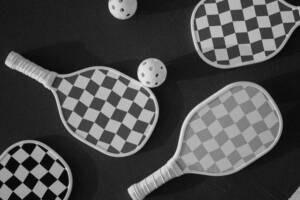
Pickleball Etiquette: What to Do (and What Not to Do) on the Court

Pickleball Etiquette: What to Do (and What Not to Do) on the Court

Beginner’s Guide to Pickleball Rules
Line Calling
Knowing how to call lines with confidence keeps every rally respectful and fast-paced. Use these principles to maintain harmony, protect fairness, and cement your reputation as a trustworthy partner or opponent.
Your Side, Your Responsibility
Own Your Lines: Each team rules on balls that land on its end of the court only. Do not call shots on your opponents’ side unless invited.
Foot-Fault Exception: Kitchen or service-line foot faults may be called on the other team, but do so only when you are absolutely certain.
Partner Coverage: If your partner’s view is blocked, speak up. Clear teamwork prevents hesitation and confusion.
Benefit Of The Doubt Principle
Uncertainty Means “In”: When you cannot see space between the ball and the line, call the shot good.
Why It Matters: Consistently generous calls build trust, reduce arguments, and encourage opponents to reciprocate.
Close Call Habit: Train your eyes to focus on the line’s edge, but accept that some angles make a precise view impossible.
Communicating Calls Clearly
Immediate Declaration: Announce “Out!” the instant the ball lands. Delayed calls feel suspect and can trigger disputes.
Volume And Clarity: Speak loudly enough for all four players to hear; a barely audible murmur invites challenges.
Correcting Errors: If you or your partner realize a wrong call, overturn it right away and award the point or replay as appropriate. Honesty trumps pride.
Handling Disagreements Gracefully
Single Question Rule: Opponents may ask once, politely: “Are you sure of that call?” Answer calmly, then move on.
Partner Split: If partners disagree about their own side’s call, the point goes to the opponents. This 2025 clarification stops endless back-and-forth and rewards decisive honesty.
Team-Versus-Team Standoff: When entire teams cannot agree—rare for line calls—offer a replay to preserve goodwill.
Never Retaliate: Responding to perceived bad calls with bad calls of your own damages your credibility and the game’s spirit.
Leveraging Referees And Technology
Referee Authority: In officiated matches, defer to the referee or line judges. Players still call their baseline and sideline if no judge is assigned, but the official has final say.
Appeal Process: You may request a line judge consultation or, in some pro events, a video challenge. Follow event protocols promptly; stalling can cost you a time-out or technical foul.
Recreational Helpers: A neutral spectator may offer input only if both teams invite it. Otherwise, outside voices stay silent to avoid confusion.
Sportsmanship Adds Up
Paddle Tap Reminder: After a tough rally decided by a razor-thin call, tap paddles and reset. Demonstrating respect diffuses lingering tension.
Praise Good Calls: A quick “Nice call” when an opponent gives you a close one reinforces mutual integrity.
Lead By Example: Calling a point against yourself, even late in a game, sets a powerful tone that echoes across every court you play.
Quick Practice Drill
Stand on the baseline while a partner feeds balls that land inches in or out.
Call each shot immediately, then check the mark.
Track accuracy; strive for at least 80 percent correct calls over 25 balls.
Sharpening your vision and refining these habits will transform how others perceive you on court. Fair, prompt, and confident line calling keeps the focus where it belongs—on great rallies, smart strategy, and the pure joy of the game.
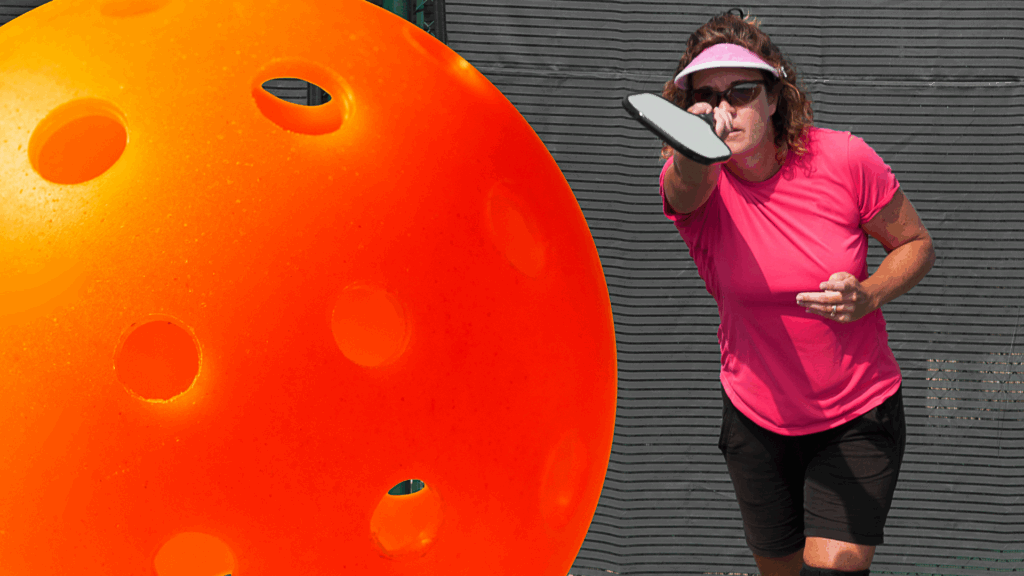
Court Conduct
Pickleball’s friendly reputation hinges on how players behave between serves just as much as how they strike the ball. Master these conduct fundamentals to keep every match upbeat, inclusive, and safe for everyone on and around the court.
Respect And Courtesy
Greet Players: Offer a quick hello and introduce yourself if you have not met—small gestures set a positive tone.
Mind Language: Keep comments encouraging; profanity or insults drain the group’s energy.
Paddle Tap: Tap paddles or fist-bump after each game, win or lose, to acknowledge shared effort.
Apologize For Net Cords: If a lucky let-cord dribbles over, raise a hand and say “Sorry” even while enjoying the point.
Thank Opponents And Partners: A simple “Good game” at the net builds respect that lasts well beyond match point.
Rotation And Inclusion
Follow The Board Or Rack: Adhere strictly to paddle racks or sign-up boards; skipping the queue frustrates those waiting.
Limit Court Streaks: During busy sessions, step off after two wins or split winning pairs to keep play circulating.
Invite New Faces: If a newcomer appears hesitant, wave them in for the next game—community thrives on welcoming attitudes.
Balance Teams: Mix skill levels when possible so games remain competitive and fun for all participants.
Handle Disputes Politely: If someone cuts in by mistake, clarify the system calmly rather than scolding.
Match Intensity And Partner Dynamics
Read Skill Levels: Dial back power against beginners; ramp up pace with advanced players who crave challenge.
Encourage, Don’t Criticize: Replace eye rolls with “You’ve got the next one” to keep partners confident.
Save Coaching For Breaks: Offer tips only if asked or between games; mid-rally lectures feel condescending.
Share The Court: Avoid poaching every shot, especially if your partner is still learning positioning.
Own Collective Faults: When confusion arises, discuss quickly, agree, and move on—blame helps no one.
Safety And Court Awareness
Call “Ball!” Loudly: Stop play immediately if a stray ball rolls onto any court.
Wait To Cross: Pause at fences or baselines until neighboring rallies finish before retrieving balls or walking behind players.
Control Your Paddle: Never throw equipment in frustration; it endangers others and risks penalties under new rules.
Store Gear Neatly: Keep bags, water bottles, and chairs clear of playing areas to prevent tripping hazards.
Monitor Surroundings: If children, pets, or spectators drift close to active courts, pause and guide them back to safe zones.
Quick Courtesy Checklist
Call The Score Loudly: Prevents confusion and disputes before each serve.
Return Balls Underhand: Send stray balls back gently when opponents are ready.
Limit Breaks: Keep water breaks brief so waiting players do not cool down.
Respect Time-Outs: Honor opponents’ legal time-outs without rushing or stalling.
Be Inclusive: Rotate partners, acknowledge good shots from everyone, and celebrate effort as much as skill.
Commit to these court-conduct habits and you will elevate not only your personal reputation but also the overall culture of every pickleball venue you visit. Friendly play, fair rotation, and vigilant safety ensure that booming participation numbers translate into genuinely enjoyable experiences for newcomers and veterans alike.
Let's Pickleball!
Pickleball’s 2025 landscape blends sharper rules with the same neighborly spirit that first drew players to the game. You now possess the playbook to keep rallies clean, arguments brief, and community vibes sky-high.
Armed with updated knowledge and solid etiquette, you are ready to elevate every game you play—whether it is a sunrise casual, a midweek league, or a regional qualifier with medals on the line. Step onto the baseline with confidence, call lines with conviction, and greet opponents with a grin that says, “Let’s make this fun.”
Ready for more tips, drills, and gear deep dives? Read our Pickleblog for more insights and resources.
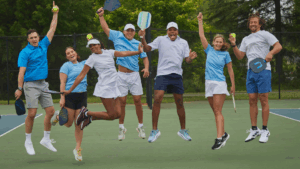
Stylish and Functional: Pickleball Apparel That Works on and off the Court
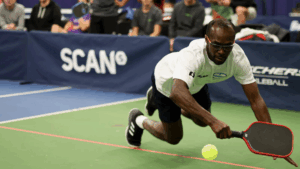
A Beginner’s Guide to Joining a Pickleball League Without Overcommitting

Pickleball Etiquette: What to Do (and What Not to Do) on the Court
